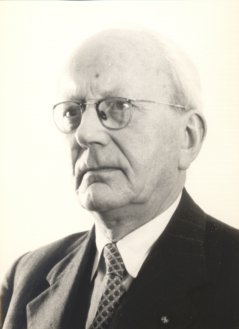
1934 – 1955; closing the cycle
Closing the cycles of elements is a key factor in today’s attempts to establish a balanced circular ecology and bioeconomy. At his inauguration, in 1934, Prof. Jan Smit was the first to identify the need to close these cycles. He supervised PhD fellow Eppe Mulder’s research on the impact of copper on microbial and plant growth. Later on, Eppe Mulder succeeded Jan Smit as Professor and Chair of Microbiology.
Model system
Jan Smit’s pioneering ideas were further developed through groundbreaking research by his colleague Klaas Wieringa. In 1938, Wieringa was the first to identify and cultivate the homoacetogen Clostridium aceticum, a micro-organism that converts hydrogen and carbon dioxide into acetate. Since this anaerobe can also produce acetate from hydrogen and carbon monoxide - often produced in industrial settings in the form of syngas - it could be a promising candidate for industries wanting to close the carbon cycle.
Dr Klaas T. Wieringa (1919-1959) was one of the longest appointed co-workers.
